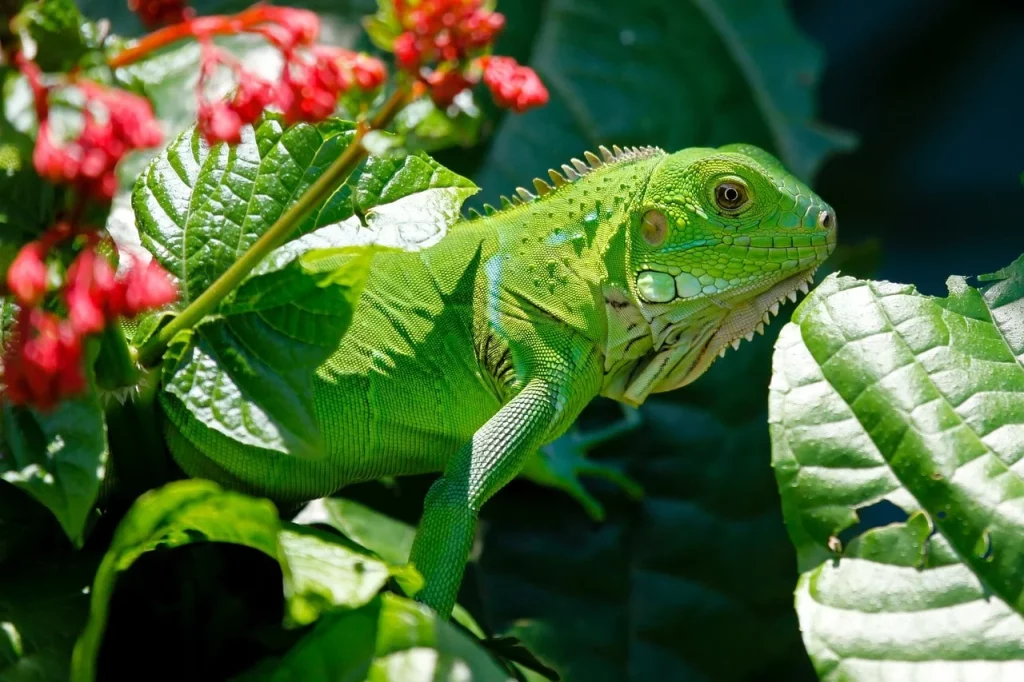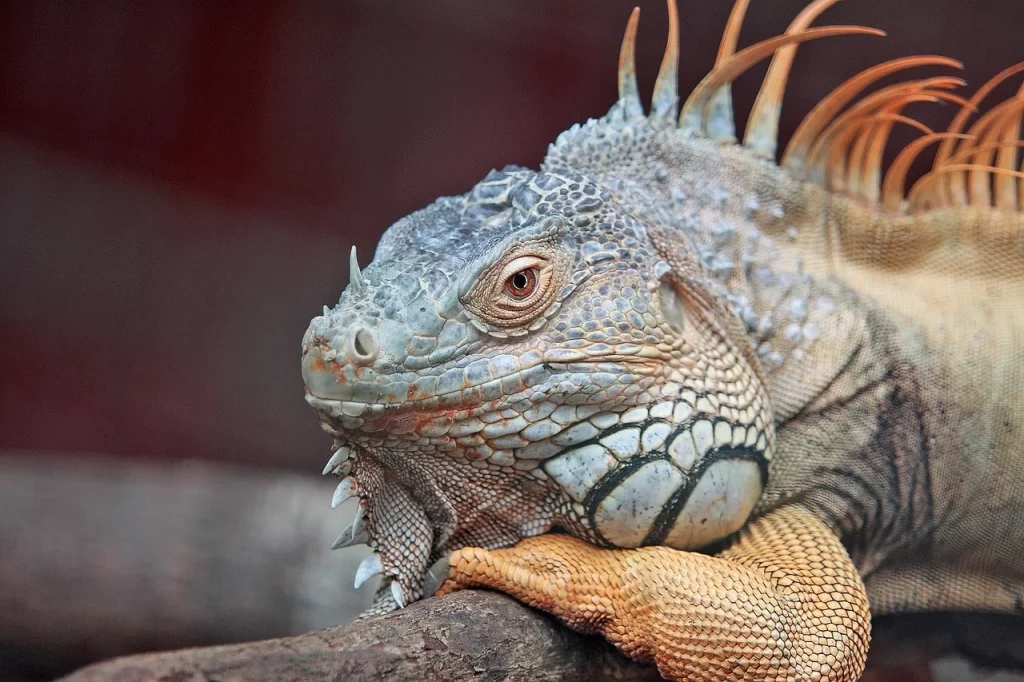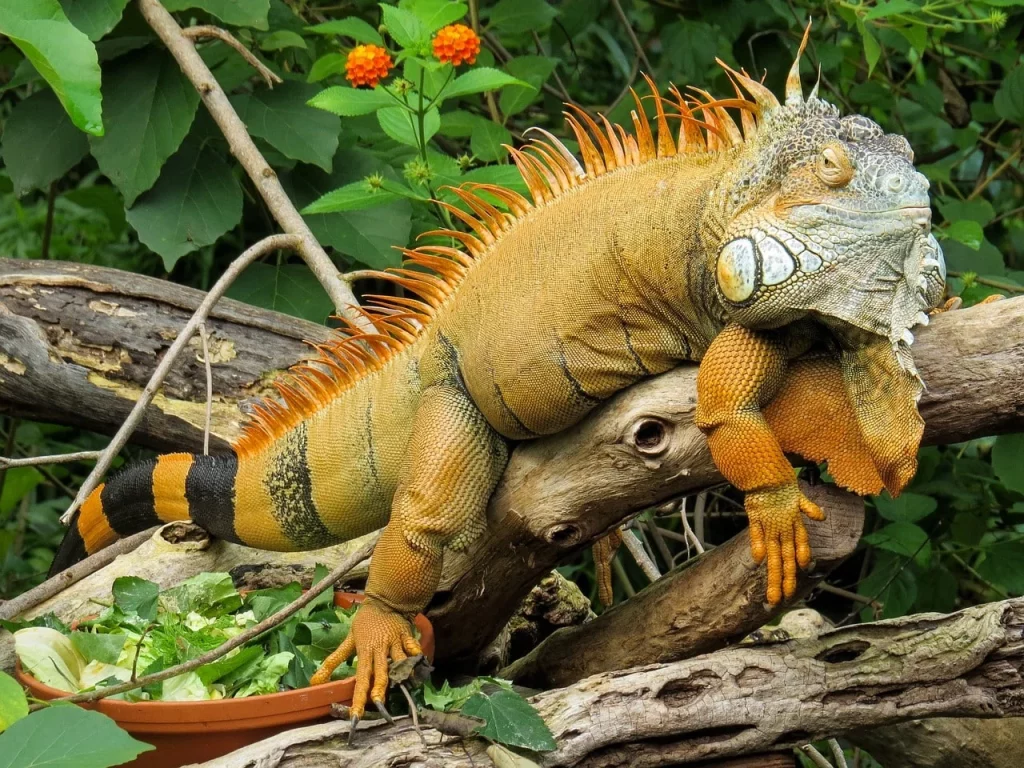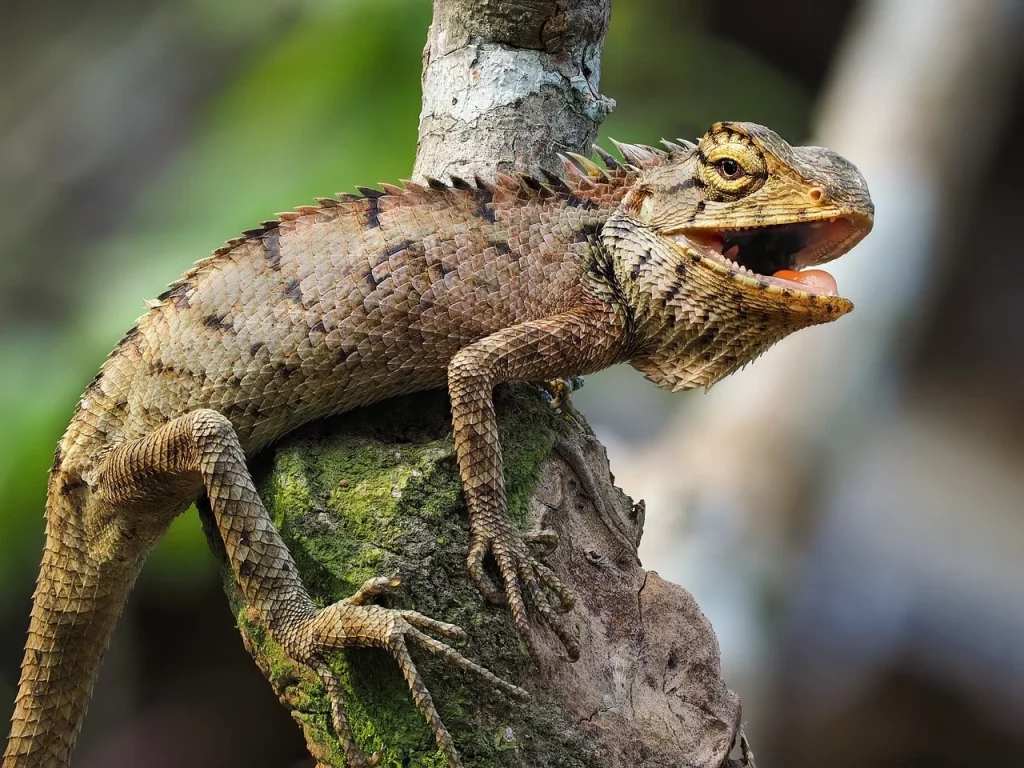Step into the world of iguanas, where every day is an adventure filled with sun, salads, and the occasional sprint from predators. They might seem like laid-back creatures, but they’re actually quite complex and fascinating.
For instance, did you know that some iguanas are excellent swimmers, while others can fall from 40 feet without getting hurt? Yes, they’re pretty much the action heroes of the reptile world.
As we uncover all these interesting facts about iguanas, you’ll find yourself wondering, “Is there anything these amazing animals can’t do?” Ready to jump into their exciting world?
In the eyes of an iguana, we see the simplicity of nature and the complexity of evolution.
David Attenborough
Iguana Facts
Let’s start our journey. Pay close attention to each fact, because I created a quiz at the end of this article to test your knowledge. Don’t disappoint me.
- These reptiles can hold their breath underwater for up to 30 minutes.
- Their tail can be detached if caught by a predator, a process known as autotomy, and it can regrow over time.
- Three hearts pump blood through their body: one main heart and two additional auxiliary hearts.
- Despite their robust appearance, they are excellent swimmers.
- They possess a parietal eye on top of their head, which is sensitive to changes in light and dark.
- Herbivorous by nature, their diet primarily consists of leaves, flowers, and fruit.
- Their sharp claws make them adept climbers, enabling them to ascend trees and cliffs easily.
- Some species can change color for thermoregulation or as a means of communication.
- Capable of surviving falls from up to 40 feet without injury.
- Their social structure is complex, with dominant males controlling territories and harems of females.
- They use visual signals, such as head bobs and dewlap displays, to communicate with other iguanas.
- Fasting during the breeding season is common to save energy for mating.
- Their lifespan in the wild can exceed 20 years, depending on the species.

- Can run on their hind legs to escape predators.
- Salt glands in their nostrils allow them to expel excess salt, which is crucial for those living near the ocean.
- They can shrink their body size by up to 20% during scarce food periods to conserve energy.
- Their skin is covered in small scales, which contain bacteria that can be harmful to humans if not handled properly.
- A specialized flap of skin, called the dewlap, is used for thermoregulation and to intimidate rivals.
- Capable of learning and remembering tasks to navigate their environment.
- Egg laying can include burrows dug to depths of over 2 feet to protect offspring from predators and temperature extremes.
- They have very sharp teeth, which are constantly being replaced throughout their lives.
- Their jaw strength is impressive, allowing them to munch through tough vegetation.
- Native to Central and South America, but they have been introduced to many other parts of the world.
- Thermal regulation is a daily activity; they bask in the sun to warm up and seek shade to cool down.
- Male iguanas can become especially aggressive during the breeding season.
- Some species have evolved to thrive on the Galapagos Islands, exhibiting unique behaviors and physical traits.
- Their whip-like tail can be used as a formidable weapon in defense against predators or rivals.
- Population control measures have been necessary in areas where they are considered invasive.

- Captive breeding programs have been successful in conserving species at risk of extinction.
- Their eyes can move independently, allowing them to observe two different directions at once.
- Despite their scaly appearance, they are known to shed their skin in patches.
- A specialized muscle allows them to alter the depth of their body to regulate buoyancy while swimming.
- Environmental changes and habitat destruction pose significant threats to their survival.
- Their unique reproductive strategies include laying eggs in communal nests to enhance offspring survival.
- Hibernation is not practiced, but they can slow their metabolism in cooler temperatures.
- Some species display vivid colors during the breeding season to attract mates.
- They possess a keen sense of smell to detect predators and locate food.
- Their social behaviors can include forming groups for warmth and protection.

- Cryptic coloration helps them blend into their surroundings to avoid detection by predators.
- Resilience to climate change varies greatly among species, affecting conservation strategies.
- They have a remarkable ability to navigate back to their home range after being displaced.
- Mutation and adaptation have led to significant diversity among species in coloration, size, and habitat preference.
- Their contribution to their ecosystem includes dispersing seeds and maintaining the balance of vegetation.
- Cultural significance varies, with some cultures regarding them as pets, while others view them as food or pests.
- Research on their physiology and behavior has contributed to our understanding of evolutionary biology.
- Legislation in some regions protects them from hunting and habitat destruction.
- Their ability to adapt to urban environments has led to increased sightings in cities and suburbs.
- Conservation status varies, with some species listed as endangered due to habitat loss and poaching.
- Their presence in folklore and mythology often symbolizes strength and survival.
- Unique blood properties allow them to regulate their internal body temperature more effectively in varied environmental conditions.
Iguana Myths

Now that we’ve explored all these fun facts about iguanas, let’s embark on a journey to separate truth from myth. The following section clarifies what’s real and what’s not.
- Iguanas Can Live on Lettuce Alone
Lettuce is often believed to be an ideal food for them. However, they require a varied diet rich in nutrients. A diet consisting only of lettuce, which is low in nutritional value, cannot provide the necessary vitamins, minerals, and fiber needed for their health and well-being. - Iguanas Are Low-Maintenance Pets
It is commonly thought that they are easy to care for. In reality, they require a significant amount of care, including specialized lighting, controlled temperatures, and a specific diet to mimic their natural habitat. Without these, their health can be severely compromised. - Iguanas Make Great Pets for Everyone
The notion exists that they are suitable pets for all. However, their care complexity, size (potentially growing over 5 feet long), and temperament make them a challenging choice for inexperienced owners. A commitment to understanding and meeting their needs is essential. - Iguanas Cannot Be Trained
Many believe that they are not trainable due to their wild nature. Contrary to this belief, with patience and consistency, iguanas can be taught to respond to simple commands and handle human interaction, proving to be quite adaptable to a domestic environment. - Iguanas Are Solitary Creatures
There’s a myth that they prefer to live in solitude. While they are not social in the same way as dogs or cats, iguanas can become accustomed to their human caregivers and other household pets if introduced carefully and socialized from a young age.
No products found.
Iguana FAQ

We are moving to the next section, the FAQ. Read these answers to some common questions carefully because the quiz is just ahead.
- Which iguanas are endangered?
Some species are indeed facing the threat of extinction. Notably, the Galápagos marine iguana and the Fiji banded iguana are considered endangered. Efforts are ongoing to protect their habitats and numbers. - Will iguanas attack humans?
They generally aren’t aggressive towards humans and prefer to run away if they feel threatened. However, if cornered or if they feel threatened, they can bite or use their powerful tail as a whip to defend themselves. - Can iguanas change color?
Yes, they can change color, but it’s not as dramatic as some other reptiles, like chameleons. Their color changes are usually associated with mood, temperature regulation, or social signaling rather than camouflage. - Are iguanas native to Florida?
No, they are not native to Florida. They were introduced to the state and have since become an invasive species. Native to Central and South America, iguanas have adapted well to Florida’s warm climate. - How do iguanas communicate?
They communicate through a variety of visual signals, such as head bobs, body postures, and dewlap (a flap of skin under the throat) extensions. These signals can convey territorial claims, aggression, and courtship intentions.
Iguana Trivia

Welcome to the Ultimate Iguana Quiz, where your knowledge will be tested and your destiny shaped. Fail to answer correctly, and you might just wake up as the proud owner of a bewildered iguana staring you down for breakfast.
Conclusion
In short, iguanas are extraordinary pets that captivate with their prehistoric appearance and complex behavior. They remind us of the profound connection we can share with creatures different from ourselves.
Caring for an iguana means becoming a student of their needs and a guardian of their well-being. It’s a journey filled with learning and love. Till next time, stay curious and explore more. Cheers.


